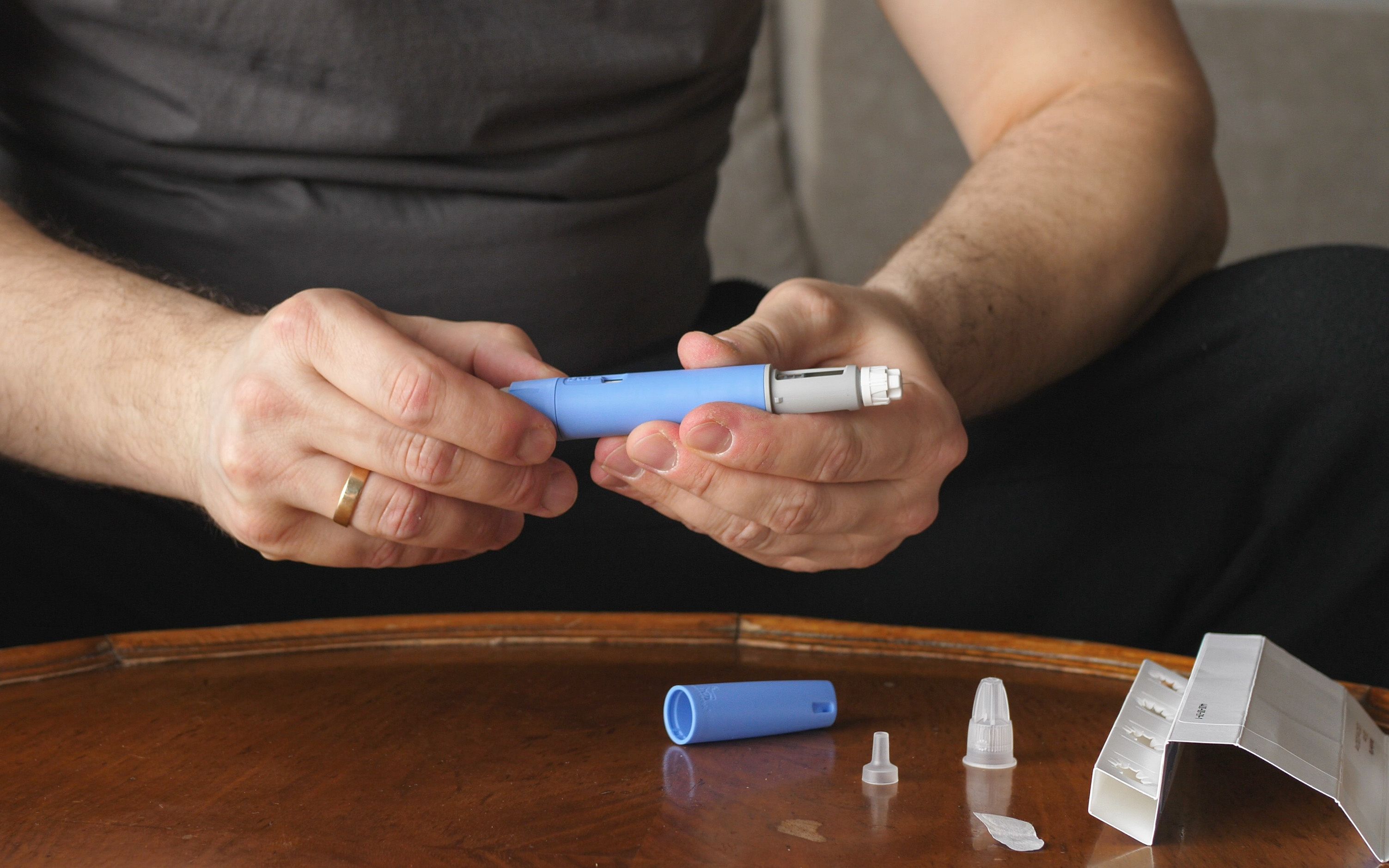- Acne
- Actinic Keratosis
- Aesthetics
- Alopecia
- Atopic Dermatitis
- Buy-and-Bill
- COVID-19
- Case-Based Roundtable
- Chronic Hand Eczema
- Chronic Spontaneous Urticaria
- Drug Watch
- Eczema
- General Dermatology
- Hidradenitis Suppurativa
- Melasma
- NP and PA
- Pediatric Dermatology
- Pigmentary Disorders
- Practice Management
- Precision Medicine and Biologics
- Prurigo Nodularis
- Psoriasis
- Psoriatic Arthritis
- Rare Disease
- Rosacea
- Skin Cancer
- Vitiligo
- Wound Care
News
Article
Aesthetic Implications of GLP-1 Agonists
Author(s):
Key Takeaways
- GLP-1 receptor agonists, like semaglutide, significantly aid weight loss but can cause aesthetic issues such as facial volume loss and skin laxity.
- Aesthetic interventions, including dermal fillers, biostimulatory agents, and surgical procedures, effectively address facial volume loss and skin laxity.
A recent review recognized the aesthetic concerns associated with GLP-1-induced weight loss and noted treatment options for various challenges.
Glucagon-like peptide-1 (GLP-1) receptor agonists, particularly semaglutide, have revolutionized the management of diabetes and obesity. By enhancing glucose-dependent insulin secretion, delaying gastric emptying, and promoting satiety, these agents lead to significant weight loss and improved metabolic health.1 However, their rapid and substantial weight reduction often results in aesthetic challenges, such as excess skin, facial volume loss, and premature aging. These concerns are increasingly recognized in the medical and aesthetic fields, fueled by widespread social media discussions. A recent review aimed to identify these key aesthetic concerns associated with GLP-1-induced weight loss and examine various treatment modalities.2
Facial Volume Loss and Aging
The review stated that rapid weight loss induced by semaglutide often leads to depletion of subcutaneous fat in critical areas like the midface, temples, and periorbital regions. This fat loss can result in hollowing, sagging, and jowling, giving the face a gaunt, aged appearance. Researchers found patients frequently express dissatisfaction as these changes conflict with their anticipated benefits of improved health and appearance.
To address these challenges, the review found aesthetic interventions such as dermal fillers and biostimulatory agents have proven effective. Hyaluronic acid (HA) fillers restore lost volume and contour, especially in the midface and jawline, while biostimulatory agents like calcium hydroxylapatite (CaHA) and poly-L-lactic acid (PLLA) stimulate collagen production for sustained improvements. It noted that advanced techniques like fat grafting offer natural-looking results by reintroducing autologous fat into depleted areas, combining volumization with structural support.
Skin Laxity
Researchers noted the skin's ability to retract after rapid weight loss is influenced by age, genetics, and the pace of weight reduction. They found patients often present with drooping cheeks, deepened nasolabial folds, and neck sagging, compounded by the loss of supporting fat. Notably, body areas, including the arms, abdomen, and thighs, may also exhibit significant skin laxity, causing both functional and aesthetic issues.
Nonsurgical options like radiofrequency (RF), high-intensity focused ultrasound (HIFU), and fractional lasers stimulate collagen and elastin production, which the review stated improves skin firmness. For moderate to severe laxity, it noted that surgical interventions such as facelifts or body lifts may be required. Combining surgical procedures with adjunctive skin-tightening treatments optimizes outcomes, offering both immediate and long-term improvements.
Body Contouring
GLP-1-induced weight loss often leaves patients with excess skin and residual fat deposits that disrupt body contours, according to the review. Noninvasive approaches, such as cryolipolysis and RF-based technologies, we recognized to help reshape these areas. For substantial excess skin, researchers stated surgical solutions like abdominoplasty or thigh lifts provide effective results. They noted many patients benefit from multimodal strategies that integrate noninvasive and surgical methods.
Psychological Considerations
The review noted psychological impact of aesthetic changes, particularly facial aging, can be profound. Patients may struggle to reconcile their improved health with an aged appearance. It stated addressing these concerns through personalized treatment plans and empathetic care is essential to improving both physical and emotional well-being.
Future Directions
While current treatments address aesthetic concerns, researchers suggested further research is needed to understand the molecular effects of GLP-1 agonists on collagen, elastin, and fat distribution. Optimizing the timing of interventions—whether preventive during weight loss or corrective after stabilization—remains a key question. They noted advanced imaging techniques, like ultrasound or MRI, may refine treatment planning by providing detailed insights into tissue changes.
Conclusion
As semaglutide and other GLP-1 agonists gain popularity, the review stated clinicians must adapt to address the aesthetic consequences of rapid weight loss. Through a combination of volume restoration, skin-tightening technologies, and surgical interventions, researchers wrote that practitioners could help patients achieve harmonious, youthful results. They suggested that integrating aesthetic and medical expertise will be critical to meeting the evolving needs of this patient population.
References
- Ard J, Fitch A, Fruh S, Herman L. Weight loss and maintenance related to the mechanism of action of glucagon-like peptide 1 receptor agonists. Adv Ther. 2021;38(6):2821-2839. doi:10.1007/s12325-021-01710-0
- Haykal D, Hersant B, Cartier H, Meningaud JP. The role of GLP-1 agonists in esthetic medicine: Exploring the impact of semaglutide on body contouring and skin health. J Cosmet Dermatol. 2024. doi:10.1111/jocd.16716
Newsletter
Like what you’re reading? Subscribe to Dermatology Times for weekly updates on therapies, innovations, and real-world practice tips.















